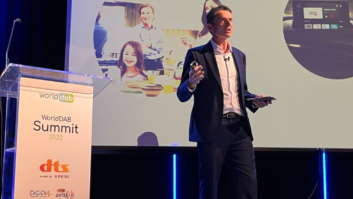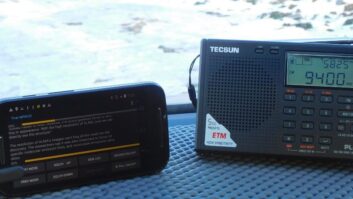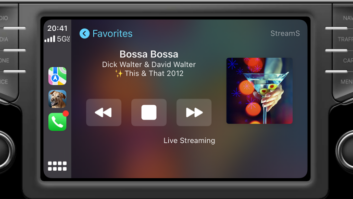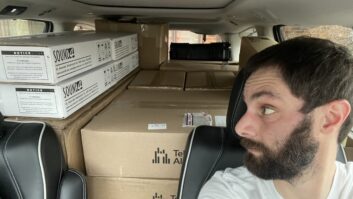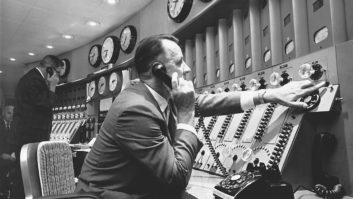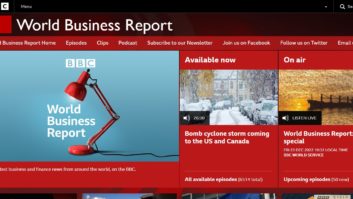
Audio Time’s data shows that multi-platform live radio (over the air, web and mobile) remains the U.K.’s most popular audio choice at 74 percent. All images courtesy RAJAR OTTAWA, Ontario — In 2015, advertisers in the United Kingdom spent £592 million to hawk their wares on the nation’s airwaves. That amount was up 2.9 percent from the year before, and is projected to increase by 4.3 percent in 2016. (Source: The Advertising Association/Warc Expenditure Report.)
Of course, what drove this spending was the U.K. broadcasters’ ability to measure commercial radio’s on-air audiences, and to deliver this demographic data to advertisers. Without it, advertisers wouldn’t bother buying radio airtime, because they wouldn’t know who was listening when.
When it comes to audience measurement — the sales basis for buying “space” on any media broadcast or stream — internet radio is only beginning to emerge from the Dark Ages. In fact, the U.K.’s Radio Joint Audience Research (RAJAR) has just released its first comprehensive look at internet radio’s role in over-the-air audience reach.
Entitled “Audio Time: What the RAJAR MIDAS Audio survey tells us about listening in the digital age,” this document provides a fascinating insight into how online streaming fits into the entire U.K. radio experience — but only for those internet radio stations who also broadcast over the air.
INTERNET RADIO’S PLACE
As the U.K.’s official body for measuring radio audiences, RAJAR is the country’s authoritative voice on radio listenership. RAJAR’s Audio Time report uses data from RAJAR’s regular MIDAS Audio Survey to “measure the increasing penetration of connected devices such as tablets and smartphones,” said Lyndsay Ferrigan, RAJAR’s communications manager.

Live radio’s U.K. audience reach (over all platforms) is an impressive 90 percent, with CDs a distant second at 30 percent. “MIDAS shows how listeners are embracing the multi-platform and multi-device offering, as well as how radio-on- demand is contributing to listening behavior,” she said. “It also reveals the activities they are doing while listening, where they are listening, and who they are listening with.”
Here’s what RAJAR’s MIDAS survey has found out, starting with the big picture.
Overall, U.K. radio listeners “spend nearly 26 hours each week with audio content,” said Audio Time, across 90 percent of the U.K.’s adult population through the week.
Seventy-four percent of this audio content time is spent listening to live radio (on all platforms) by over 48 million U.K. adults. Digital music is next at 8.2 percent; followed by on-demand music services such as Apple Music and Spotify; 5.1 percent spent with CDs, 3.4 percent with online music videos and just 1.7 percent with podcasts. “Catch up radio,” where people listen to prerecorded/already broadcast radio content online, only clocks in at 1.2 percent of total U.K. adult audio listenership; while venerable cassette tapes and vinyl account for 0.4 percent.
As one might expect, “15- to 24-year-olds are less likely to use listen again radio services, but more likely to listen to podcasts and are actually exposed to more audio than the total population — 27.5 hours across the week,” said Audio Time. “Younger adults now devote more time to streaming media — music they don’t “own” — than to their own digital tracks or downloads.”

When one graphs U.K. audience reach versus hours listened per week, multi-platform live radio comes out far ahead at 21.2 percent of all hours listened to. DIFFERENT PLATFORMS
Now the critical question: Where does internet radio figure into the U.K.’s overall audio listenership? It depends on which platform you are referring to — PCs and laptop computers, smartphones or tablets.
On PCs and laptops, U.K. adults spend 29.1 percent of their time listening to live radio streams from over-the-air broadcasters, compared to 25.6 percent to on-demand music services, 18 percent spent watching online music videos, 17.2 percent listening to digital tracks, 4.5 percent on catch-up radio, 3.1 percent to CDs, and just 2.5 percent to podcasts.
On smartphones, digital tracks dominate at 30.4 percent of all time spent listening, followed by 24.4 percent for on-demand music services, 21.9 percent for live radio, 12.6 percent to podcasts, 8.1 percent to online music videos, and 2.6 percent for catch-up radio. Finally, on U.K. tablets, on-demand music services are number one with 30 percent of time spent with them. Live radio is number two on tablets at 17.6 percent, followed closely by digital tracks at 17.2 percent, catch-up radio at 14.2 percent, online music videos at 14.1 percent and podcasts at 6.9 percent.
The fact that live radio does best on PCs and laptops (29.1 percent) versus tablets (21.1 percent) and smartphones (17.6 percent) may indicate a “tech generation gap” among U.K. listeners. Older, more radio-attuned adults may be more likely to use PCs and laptops to listen than smartphones and tablets, which are more favored as digicentric devices by youth.
Whatever the case, it is clear that internet radio is important to U.K. listeners. “The latest RAJAR figures, which were released on Thursday Aug. 4, show that listeners spend 83 million hours per week listening to live radio online,” said Ferrigan. “Online listening accounts for 8 percent of all radio listening hours and 18 percent of digital listening hours.” She added that U.K. online listening has increased 142 percent in the last five years.
The fact that RAJAR measures conventional radio’s reach into the web is good news for on-air broadcasters. They can use these measurements to convince advertisers to “buy” their stations on a multi-platform audience basis, rather than just for their over-the-air listeners.
Unfortunately, U.K. content producers who have internet-only radio stations are out of luck; at least when it comes to selling streaming time using RAJAR MIDAS data. The reason: “We don’t really have much information for internet-only stations as they do not subscribe to RAJAR, meaning we do not measure them,” said Ferrigan. “The only information we have is that participants in the RAJAR survey often ‘write-in’ the stations they were listening to that we don’t measure.”
This means that when RAJAR publishes a figure that is called under the title “Other Radio,” this listening data includes unmeasured audio sources such as Internet radio stations, community radio stations, pirate radio, hospital radio and other types of less frequently consumed radio. “In Q2 2016, ‘Other Radio’ reached 3.7 million listeners in a week and accounted for a 2 percent share of listening hours.” Ferrigan said.

Live radio streaming leads on PCs/laptops with 29.1 percent of all listenership, followed by 21.9 percent on smartphones (digital music tracks are number one at 30.4 percent) and 17.2 percent on tablets (on-demand music services are at 30 percent). GLOBAL AUDIENCE MEASUREMENT
If internet radio is to ever become an advertising medium that is not anchored in over-the-air broadcasting, some form of global audience measurement system needs to be funded and implemented that monitors every viable station on the web.
Certainly such tools exist, one being TritonDigital’s WebcastMetrics system that Nielsen uses to measure U.S. internet radio listenership (albeit again for AM/FM/HD Radio-fed internet radio streams).
“WCM is the industry standard in online audio audience measurement, and the basis for the majority of online audio advertising transactions today,” said Rob Favre, TritonDigital’s SVP of Measure Development and Strategy.
“It provides census-based credible, third-party data that is translated into traditional and digital metrics, making it possible for audio publishers to quantify the size and scale of their online audience.”
Census-based measurement means collecting audience data from each session that a webcaster serves to listeners online or via mobile. “With 100 percent census-based measurement, if you listen, you are counted, and only for the true amount of time you listen for,” said Favre. “This one-to-one measurement approach provides publishers, advertising agencies, rep firms and buyers of all sizes with an accurate view of all listener activity across all listening platforms, across all players and devices and in all locations.”
The only downside is that is that WCM and other such online audience measurement tools cost money to develop and administer. Unless internet-only stations form their own organizations to fund such measurements, or buy into existing services such as RAJAR, their listenership will not be measured.
As a result, advertisers won’t know who is listening to internet-only radio stations, and thus see no business case for buying commercial time on them. Without meaningful ad sales, such internet-only stations are doomed to remain commercial niche players at best, and hobbyist-run ventures at worst.
James Careless reports on the industry for Radio World from Ottawa, Ontario.





